- Home
- C. S. Lewis
The Dark Tower
The Dark Tower Read online
CONTENTS
PREFACE
I THE DARK TOWER
A NOTE ON THE DARK TOWER
II THE MAN BORN BLIND
III THE SHODDY LANDS
IV MINISTERING ANGELS
V FORMS OF THINGS UNKNOWN
VI AFTER TEN YEARS
NOTES ON AFTER TEN YEARS
ABOUT THE AUTHOR
ALSO BY C. S. LEWIS
FURTHER READING
CREDITS
COPYRIGHT
ABOUT THE PUBLISHER
PREFACE
C. S. Lewis died on 22 November 1963. In January 1964 I went to stay with Dr and Mrs Austin Farrer at Keble College while Lewis’s brother, Major W. H. Lewis, began clearing out the Kilns (the family home) preparatory to moving into a smaller house, where I was later to join him. The Lewis brothers felt little of that veneration for manuscripts so typical of many of us, and Major Lewis, after setting aside those papers which had a special significance for him, began disposing of the others. Thus it was that a great many things which I was never able to identify found their way on to a bonfire which burned steadily for three days. Happily, however, the Lewis’s gardener, Fred Paxford, knew that I had the highest regard for anything in the master’s hand, and when he was given a great quantity of C. S. Lewis’s notebooks and papers to lay on the flames, he urged the Major to delay till I should have a chance to see them. By what seems more than coincidence, I appeared at the Kilns that very day and learned that unless I carried the papers away with me that afternoon they would indeed be destroyed. There were so many that it took all my strength and energy to carry them back to Keble College.
That evening, while glancing through them, I came across a manuscript which excited me very much. Yellow with age but still perfectly legible, it opened with the words: ‘“Of course,” said Orfieu, “the sort of time-travelling you read about in books—time-travelling in the body—is absolutely impossible.”’ A few lines down the page I came across the name of ‘Ransom’, whom it said ‘had been the hero, or victim, of one of the strangest adventures that had ever befallen a mortal man’. I knew I was reading part of another of Lewis’s interplanetary novels—The Dark Tower as I have called it—which is published here for the first time.
Those already familiar with Lewis’s interplanetary trilogy, Out of the Silent Planet (1938), Perelandra (1943), and That Hideous Strength (1945), will recall that the first of these novels ends with a letter from the fictional Dr Elwin Ransom of Cambridge to his friend C. S. Lewis (himself a minor character in the stories). After remarking that his enemy, Weston, had ‘shut the door’ to space-travel through the heavens, he ends his letter (and the book) with the statement that ‘the way to the planets lies through the past’ and that ‘if there is to be any more space-travelling, it will have to be time-travelling as well . . . !’
During the brief period that I was his secretary, Lewis told me that he never at any time had any intention of writing three connecting novels or creating what some see as a single coherent ‘myth’. I believe, however, that though he thought he was completely rid of his antagonists, Weston and Devine, he had in mind the possibility of a sequel to Out of the Silent Planet in which Ransom would play some part and in which time-travel would figure pretty largely—as is evidenced by the obvious tie-up between the last sentence of Out of the Silent Planet and the opening sentence of The Dark Tower. Indeed, this is borne out by a letter to Sister Penelope CSMV dated 9 August 1939 in which he says that the ‘letter’ at the end of Out of the Silent Planet and ‘“the circumstances which put the book out of date” are merely a way of preparing a sequel’. My guess is that Lewis began writing the story almost immediately after completing Out of the Silent Planet in 1938, and this would appear to be supported by the passage on page 19 where MacPhee, growing impatient with the talk about time-travel, chaffs Orfieu about the ‘remarkable discovery’ that ‘a man in 1938 can’t get to 1939 in less than a year’.
The manuscript of The Dark Tower consists of 62 sheets of ruled paper measuring 8 ¹⁄²" × 13" and numbered from 1 to 64. Pages 11 and 49 are missing, and—sadly—the story is incomplete. It breaks off in mid-sentence on page 64, and as I have never discovered any more pages I cannot be certain whether or not Lewis ever finished it. As it is best saved till later, I have included all that I have been able to learn about the story in a note, appended to the end of the fragment.
There are those who feel there is something cruel in publishing fragments because in many cases we cannot even guess how the author would have ended his story. That is one reason why I advised Lewis’s trustees to hold on to The Dark Tower for the time being. Another is that I anticipate unfavourable comparisons with the trilogy. Notwithstanding the high expectations established by Lewis’s pen, I nevertheless do not believe that an artifact such as The Dark Tower should be expected to approach the invention and completed perfection of his superb interplanetary trilogy. We must suppose even Lewis to have believed this: he had never attempted to publish it, and, considering his great fecundity, I dare say he had long forgotten having written it. But one thing he would not have forgotten, and that is the unwisdom of mistaking the publication of what was intended as little more than a literary diversion for the advancement of an ethical theorem. The world is not sinking under the weight of good holiday fiction, and what it would be madness to treat with that unfortunate seriousness which puts literature on a level with Scripture, it is a pleasure to offer as entertainment.
The next piece in this book, ‘The Man Born Blind’, was found in one of the notebooks given me by Lewis’s brother. It has never been published before and, as far as I know, was not seen by anyone during the author’s lifetime with the exception of Owen Barfield and possibly J. R. R. Tolkien. Though I regret never having asked Tolkien about the story, I was interested to learn that he mentioned it to Professor Clyde S. Kilby who says in Tolkien and the Silmarillion (1976): ‘Tolkien told me of C. S. Lewis’s story about the man born with a cataract on each eye. He kept hearing people talk of light but could not understand what they meant. After an operation he had some sight but had not yet come to understand light. Then one day he saw a haze rising from a pond (actually, said Tolkien, the pond at the front of Lewis’s home) and thought that at last he was seeing light. In his eagerness to experience real light, he rushed joyfully into it and was drowned’ (pp. 27–8). As there is no mention in the story as to what caused the man’s blindness (some children are indeed born with cataracts) and the man is not drowned, it seems likely that Tolkien heard Lewis tell a version of the story rather than that he read the one published here. Owen Barfield tells me that ‘The Man Born Blind’ was written during the late 1920s when he and Lewis were deep in that ‘Great War’ debate over Appearance and Reality which Lewis refers to in his autobiography, Surprised by Joy. Though the story is perfectly clear, the ‘idea’ behind it was later taken a bit further in Lewis’s essay ‘Meditation in a Toolshed’ in which he discusses the fatal modern habit of always looking at things, such as a beam of light, rather than not only at them but along them to the objects which they illumine. Another possible motivation for the story may have been Lewis’s fascination with the account of the man born blind in St Mark (8:23–5), where it is recorded that Jesus ‘took the blind man by the hand and led him out of the town; and when he had spit on his eyes, and put his hands upon him, he asked him if he saw aught. And he looked up, and said, I see men as trees, walking. After that he put his hands again upon his eyes, and made him look up: and he was restored, and saw every man clearly.’
Mr Barfield has said in his introduction to Light on C. S. Lewis (1965) that Lewis, some time after showing the story to him, ‘told me . . . he had been informed by an expert that the acquisition of sight by a blin
d adult was not in fact the shattering experience he had imagined for the purposes of his story. Years later I found in one of Sir Julian Huxley’s books an allusion to the initial results of such an operation, which suggested that Lewis had in fact imagined them pretty accurately’ (p. xviii). Certainly Lewis kept trying to imagine the results more accurately. The story was written on the right-hand pages of one of his notebooks. On the left-hand pages, in a script penned some years later, are revisions of those portions which describe what the protagonist expected Light to look like. Unluckily, these revised portions cannot be linked together with the rest of the original version and I have had to content myself with publishing the original, and only complete version of the story there is.
Lewis was not fond of that chaotic genre of stories which go under the name of ‘stream of consciousness’ literature—or ‘steam of consciousness’ as I have heard him call it—because he believed it impossible for the human mind to observe its thoughts and be the object of its thoughts at the same time. This would be like looking in a mirror to see what you look like when you are not looking at yourself. Still, he thought it would be fun to pretend he was doing something like this, and the result is ‘The Shoddy Lands’, which appeared first in The Magazine of Fantasy and Science Fiction, X (February 1956), and afterwards in his Of Other Worlds: Essays and Stories (1966).
‘Ministering Angels’ was written in answer to Dr Robert S. Richardson’s article ‘The Day After We Land on Mars’, which was published in The Saturday Review (28 May 1955). Dr Richardson put forward the serious suggestion that ‘if space-travel and colonisation of the planets eventually become possible on a fairly large scale, it seems probable that we may be forced into first tolerating and finally openly accepting an attitude toward sex that is taboo in our present social framework. . . . To put it bluntly, may it not be necessary for the success of the project to send some nice girls to Mars at regular intervals to relieve tensions and promote morale?’1 Just what those ‘nice girls’ are apt to be like, and the kind of ‘morale’ they will promote is the subject of Lewis’s delightful ‘Ministering Angels’, which was published in The Magazine of Fantasy and Science Fiction, XIII (January 1958), and afterwards in Of Other Worlds.
Long before anyone set foot on the Moon, Lewis had predicted that ‘the real Moon, if you could reach it and survive, would in a deep and deadly sense be just like anywhere else . . . No man would find an abiding strangeness on the Moon unless he were the sort of man who could find it in his own back garden.’ Besides the so to speak indigenous strangeness Lewis imagined for Mars in Out of the Silent Planet and Venus in Perelandra, he has Ransom ask, ‘Were all the things which appeared as mythology on Earth scattered through other worlds as realities?’
It was partly an answer to this question which furnished Lewis with a subject for his story ‘Forms of Things Unknown’, the manuscript of which I discovered among the papers given me by Major Lewis. Lewis may have decided against publishing it because he supposed that many of his readers would not be familiar enough with classical mythology to take his point. However, rather than give the ‘point’ away, and possibly spoil the surprise ending, I have decided to reprint the story just as it originally appeared in Of Other Worlds.
After Ten Years is, like The Dark Tower, a fragment of what was intended to be a full-length novel, and is reprinted from Of Other Worlds. Lewis mentioned the idea of the book to Roger Lancelyn Green in 1959, and the first four chapters were completed soon after this. The story began, as Lewis said of his science-fiction trilogy and the seven Chronicles of Narnia, with ‘seeing pictures’ in his head. His time and sympathy were almost completely absorbed at this period in nursing his ill and much-loved wife. By the time she died, shortly after their trip to Greece in 1960, Lewis’s health was broken, and the wellspring of his inspiration—‘seeing pictures’—nearly dried up. He persevered, nevertheless, and was able to write one more chapter. Roger Lancelyn Green, Alastair Fowler, and I, with whom Lewis discussed the story, believed that it could be one of his finest and we urged him to go on with it. No more ‘pictures’ were forthcoming, but the itch to write was still there and he paid me the highest compliment ever to come my way in asking what I should like him to write. I begged for ‘a romance—something on the order of his science-fiction novels’, to which he replied that there was no market for this kind of thing those days. England, and a great many other countries, were in the grip of ‘slice of life realism’ during the early 1960s and even Lewis could not foresee what an enormous, almost cataclysmic, effect his friend Tolkien’s fantasies were soon to have upon literature and our very understanding of reality itself, or the steadily increasing hold which his own would take. In any event, Lewis could get no further with his story before he died.
As far as I know, Lewis wrote only one draft of After Ten Years, the manuscript of which was, again, one of those saved from the fire. Lewis did not divide the fragments into parts (or give it a title), but as each ‘chapter’ appears to have been written at a different time, I have decided to retain these rather natural divisions. I must warn the reader, however, that what I have called chapter V does not really follow chapter IV. The author was anticipating the end of the story. Had he completed it, there would have been many chapters between IV and V.
Lewis discussed this work in some detail with Roger Lancelyn Green and Alastair Fowler, and I have asked them to write about the conversation they had with him. The nature of the story—especially the brilliant ‘twist’ which comes at the end of the first chapter—makes it imperative that the reader save their notes until last.
It has long been the dream of many people to see C. S. Lewis’s unpublished and uncollected fiction in a single volume, which could be placed alongside all his other romances. Those other works (excepting, of course, Lewis’s unpublished juvenilia) are readily available in English and a good many foreign translations as well, and consist of Out of the Silent Planet, Perelandra, That Hideous Strength, the seven Chronicles of Narnia, and Till We Have Faces. Those who have these books on their shelves will, by the addition of The Dark Tower: And Other Stories, own the complete fiction of C. S. Lewis.
A book, once I have read and handled it, has always seemed to me an inevitable part of life—an open-and-shut case of fact, the origins of which grow dimmer as time passes. Before this book hardens into a seeming inevitability, I want to record my indebtedness to my fellow trustees of the Lewis Estate, Owen Barfield and the late A. C. Harwood, and my other good friends, Gervase Matthew (who also died while this book was in preparation), R. E. Havard, Colin and Christian Hardie, Roger Lancelyn Green, and Alastair Fowler, all of whom knew Lewis longer than I. In this free-wheeling age it is not always easy to get people to believe that one is not diminished by seeking advice from one’s natural superiors, but I have a distinct sense of having grown as a result of the help and kindness Owen Barfield and others have given me in editing these stories.
Walter Hooper
Oxford
I
THE DARK TOWER
I
‘Of course,’ said Orfieu, ‘the sort of time-travelling you read about in books—time-travelling in the body—is absolutely impossible.’
There were four of us in Orfieu’s study. Scudamour, the youngest of the party, was there because he was Orfieu’s assistant. MacPhee had been asked down from Manchester because he was known to us all as an inveterate sceptic, and Orfieu thought that if once he were convinced, the learned world in general would have no excuse for incredulity. Ransom, the pale man with the green shade over his grey, distressed-looking eyes, was there for the opposite reason—because he had been the hero, or victim, of one of the strangest adventures that had ever befallen a mortal man. I had been mixed up with that affair—the story is told in another book—and it was to Ransom I owed my presence in Orfieu’s party. With the exception of MacPhee, we might be described as a secret society: that sort of society whose secrets need no passwords, oaths, or concealment because the
y automatically keep themselves. Unconquerable misunderstanding and unbelief defends them from the public, or, if you will, shelters the public from them. Much more work of this kind goes on than is commonly supposed, and the most important events in every age never reach the history books. All three of us knew, and Ransom had actually experienced, how thin is the crust which protects ‘real life’ from the fantastic.
‘Absolutely impossible?’ said Ransom. ‘Why?’
‘I bet you see,’ said Orfieu, glancing towards MacPhee.
‘Go on, go on,’ said the Scot with the air of one refusing to interrupt children at their play. We all echoed him.
‘Well,’ said Orfieu, ‘time-travelling clearly means going into the future or the past. Now where will the particles that compose your body be five hundred years hence? They’ll be all over the place—some in the earth, some in plants and animals, and some in the bodies of your descendants, if you have any. Thus, to go to the year 3000 AD means going to a time at which your body doesn’t exist; and that means, according to one hypothesis, becoming nothing, and, according to the other, becoming a disembodied spirit.’
‘But half a moment,’ said I, rather foolishly, ‘you don’t need to find a body waiting for you in the year 3000. You would take your present body with you.’
‘But don’t you see that’s just what you can’t do?’ said Orfieu. ‘All the matter which makes up your body now will be being used for different purposes in 3000.’
I still gaped.
‘Look here,’ he said. ‘You will grant me that the same piece of matter can’t be in two different places at the same time. Very well. Now, suppose that the particles which at present make up the tip of your nose by the year 3000 form part of a chair. If you could travel to the year 3000 and, as you suggest, take your present body with you, that would mean that at some moment in 3000 the very same particles would have to be both in your nose and in the chair—which is absurd.’

 The Lion, the Witch, and the Wardrobe
The Lion, the Witch, and the Wardrobe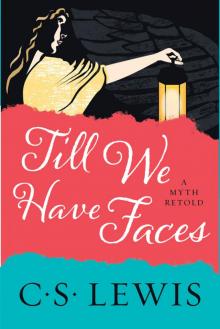 Till We Have Faces
Till We Have Faces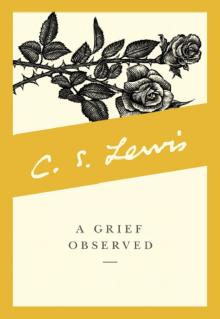 A Grief Observed
A Grief Observed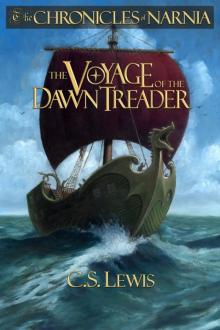 The Voyage of the Dawn Treader
The Voyage of the Dawn Treader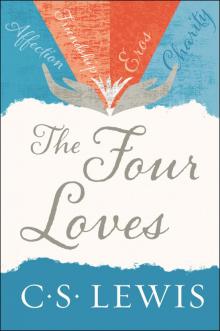 The Four Loves
The Four Loves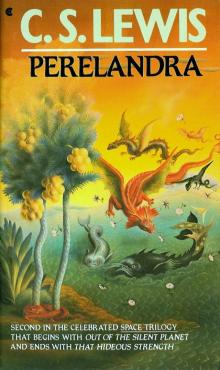 Perelandra
Perelandra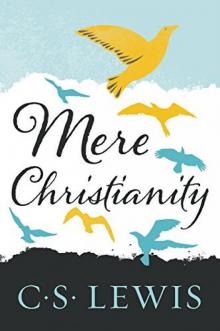 Mere Christianity
Mere Christianity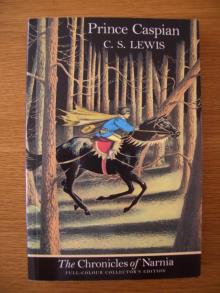 Prince Caspian
Prince Caspian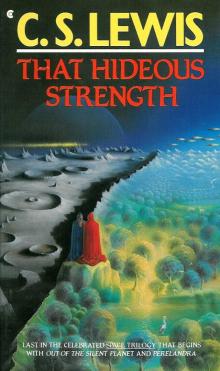 That Hideous Strength
That Hideous Strength The Magicians Nephew
The Magicians Nephew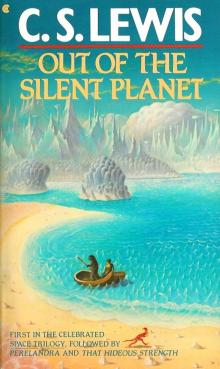 Out of the Silent Planet
Out of the Silent Planet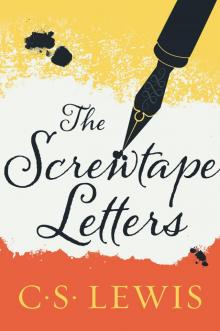 The Screwtape Letters
The Screwtape Letters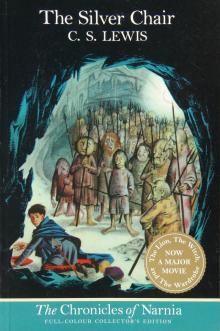 The Silver Chair
The Silver Chair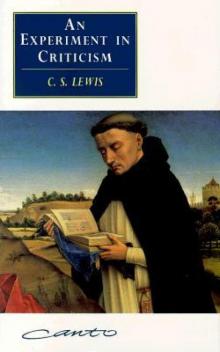 An Experiment in Criticism
An Experiment in Criticism The Horse and His Boy
The Horse and His Boy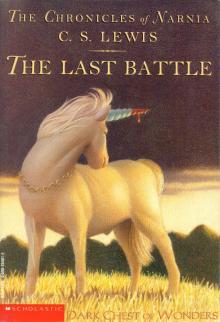 The Last Battle
The Last Battle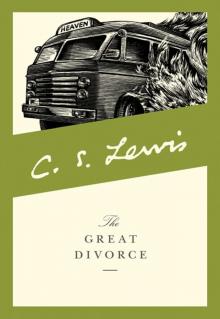 The Great Divorce
The Great Divorce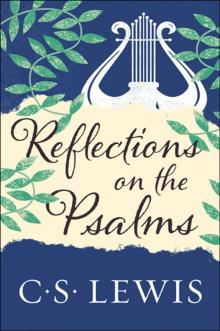 Reflections on the Psalms
Reflections on the Psalms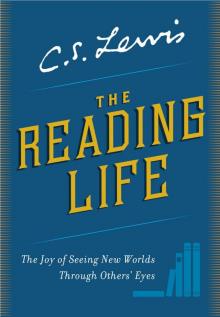 The Reading Life
The Reading Life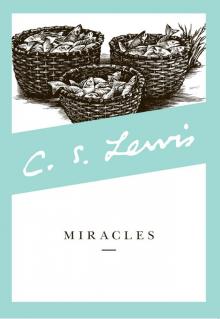 Miracles
Miracles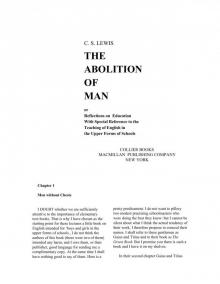 Lewis new
Lewis new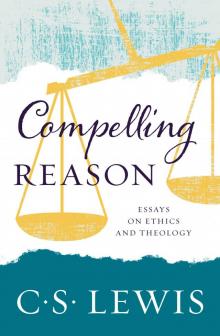 Compelling Reason
Compelling Reason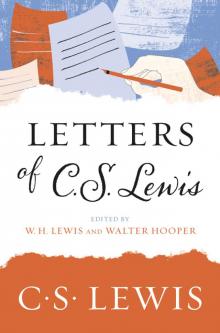 Letters of C. S. Lewis
Letters of C. S. Lewis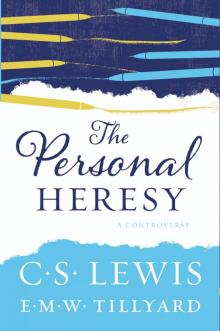 The Personal Heresy
The Personal Heresy The Lion, The Witch And The Wardrobe
The Lion, The Witch And The Wardrobe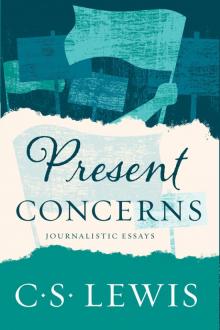 Present Concerns
Present Concerns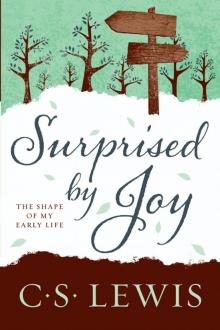 Surprised by Joy
Surprised by Joy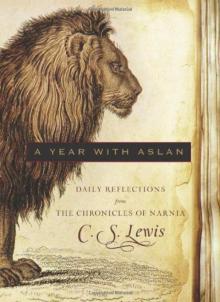 A Year with Aslan: Daily Reflections from The Chronicles of Narnia
A Year with Aslan: Daily Reflections from The Chronicles of Narnia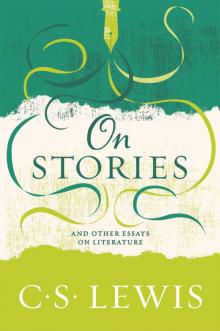 On Stories
On Stories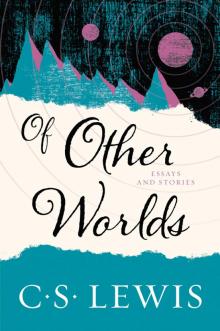 Of Other Worlds
Of Other Worlds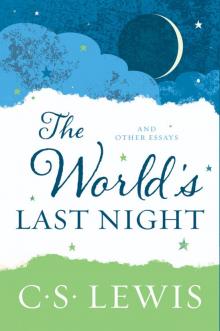 The World's Last Night
The World's Last Night The Discarded Image
The Discarded Image The Chronicles of Narnia Complete 7-Book Collection with Bonus Book
The Chronicles of Narnia Complete 7-Book Collection with Bonus Book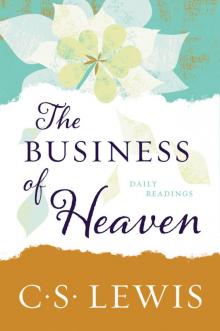 The Business of Heaven
The Business of Heaven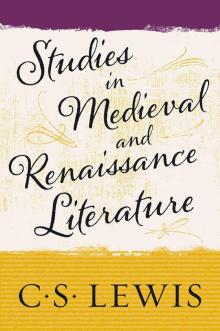 Studies in Medieval and Renaissance Literature
Studies in Medieval and Renaissance Literature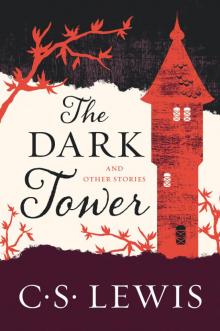 The Dark Tower
The Dark Tower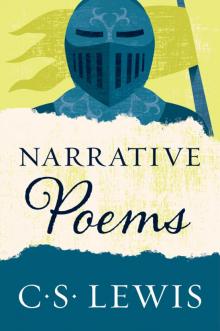 Narrative Poems
Narrative Poems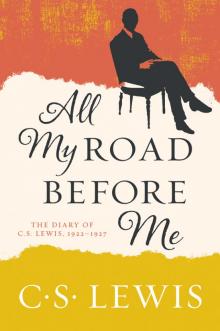 All My Road Before Me
All My Road Before Me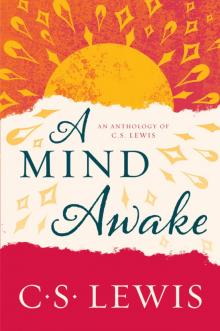 A Mind Awake
A Mind Awake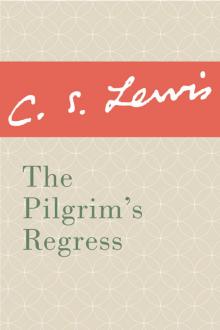 The Pilgrim's Regress
The Pilgrim's Regress